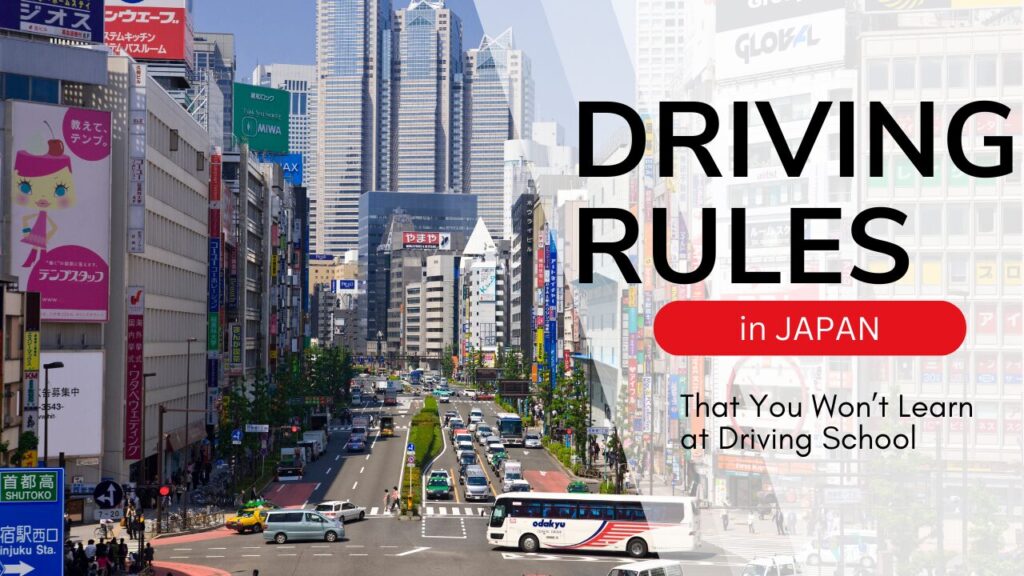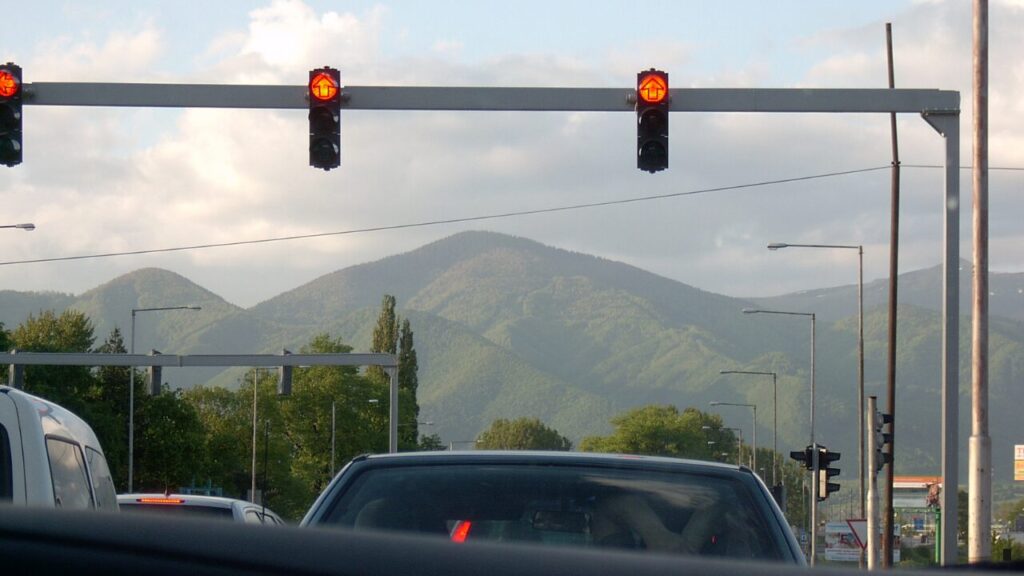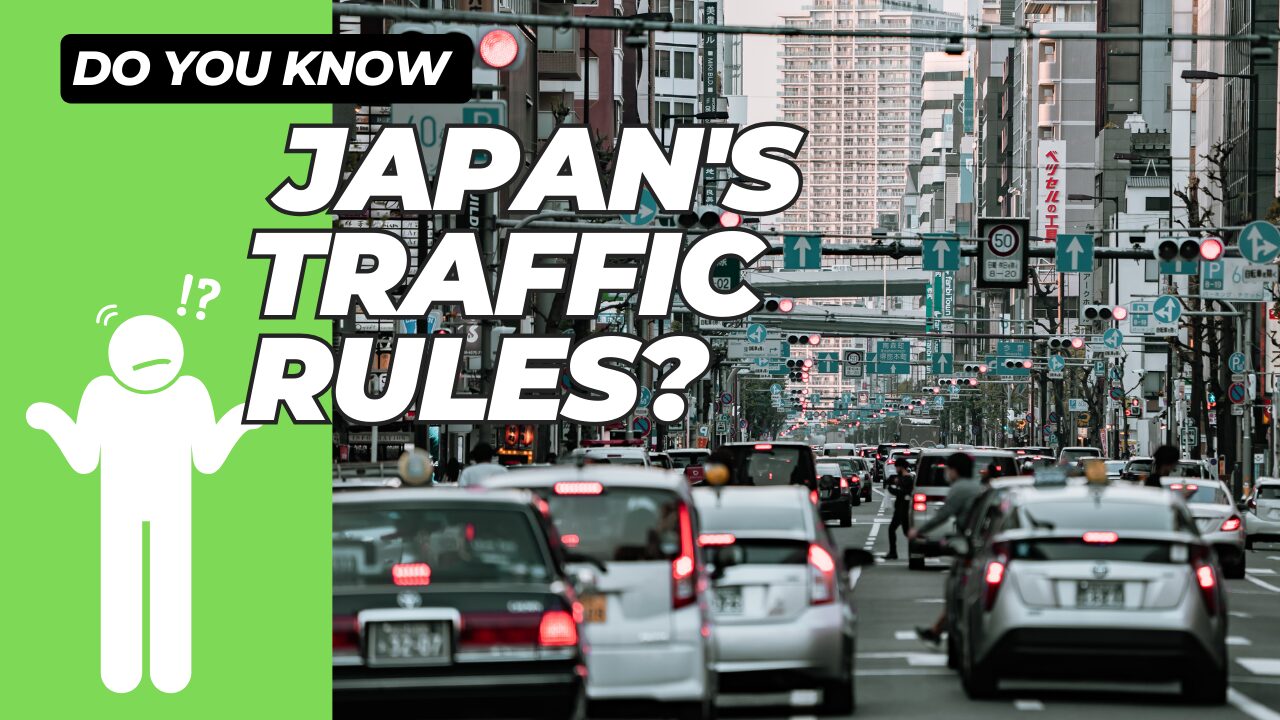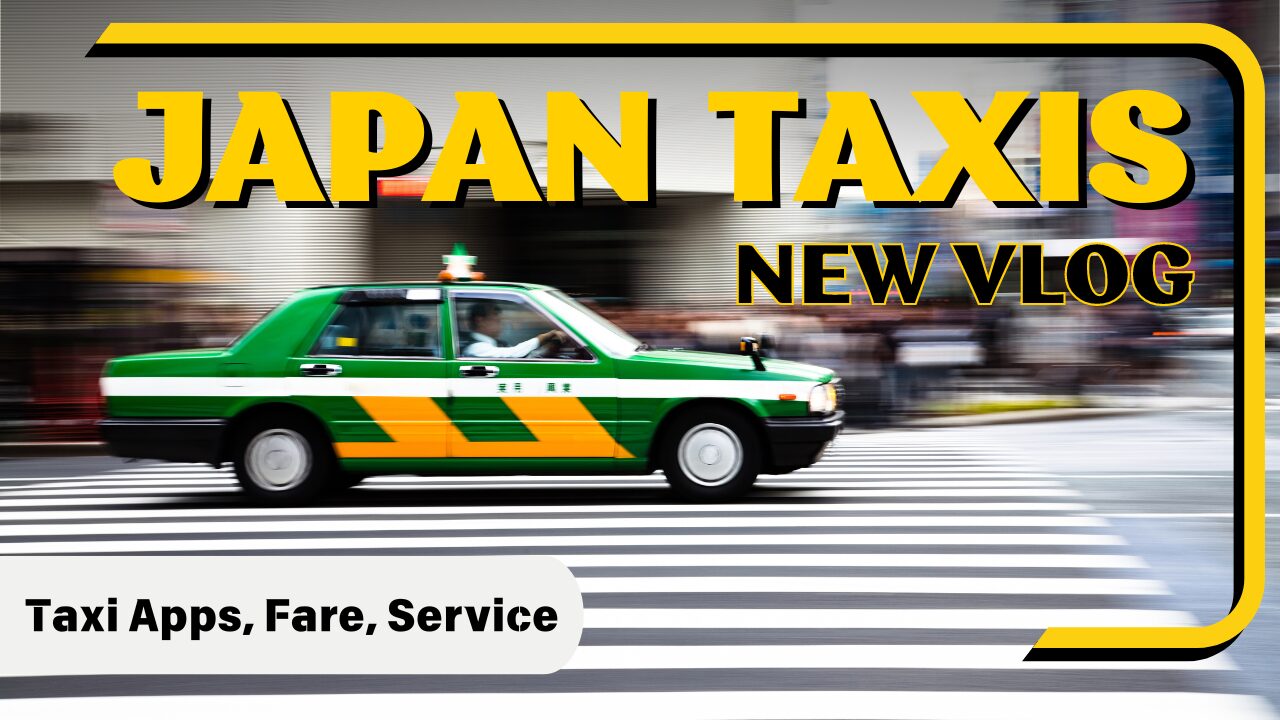
It is natural that road conditions, social customs, and cultural characteristics differ from country to country or region to region. Traffic laws regarding driving are established in each country or region, and Japan is known for having some of the strictest traffic rules in the world. It’s also well-known that many Japanese people strictly adhere to these traffic rules.
In this article, we will explain some driving rules in Japan that you won’t learn at driving school! However, please note that some of these are unofficial rules used for communication between drivers. Make sure to understand Japan’s road traffic laws before applying them.
Turning Off Headlights While Waiting at Traffic Lights

In Japan, some drivers turn off their headlights while waiting at traffic lights during dusk or nighttime to avoid dazzling oncoming vehicles. This kind of consideration is very typical of Japanese people, isn’t it? However, even though the small lights remain on, this makes it harder for oncoming vehicles, pedestrians, or cyclists to notice your presence, which isn’t safe.
When the light turns green and oncoming cars suddenly turn their headlights back on, it can startle other vehicles and people. Therefore, it’s better to keep your headlights on even when waiting at traffic lights.
Headlight Flashing

Many people in Japan use headlight flashing, but the meaning varies depending on the situation, so it’s important to be careful.
1.”Go Ahead”
When a car flashes its headlights on narrow roads, intersections, or merging points, it often means “you can go ahead” as a signal to yield. For example, when you’re waiting with your turn signal on to enter a shop on the opposite side of the road, an oncoming car may flash its headlights to let you go first. In such cases, raising your hand to thank them or flashing your headlights in return can mean “thank you.”
2.”I Want to Go First”
This commonly occurs when waiting to make a right turn at an intersection. The car going straight in the oncoming lane flashes its headlights several times, signaling, “I’m going to go first, so don’t turn yet!” In most cases, the flashing is done multiple times, not just once.
Misunderstanding the meaning of headlight flashing in this context can lead to accidents, so if you’re unsure about the signal, it’s important to wait. If you don’t understand, waiting is always safer—never try to force your way through.
3.Warning of Something Ahead
Headlight flashing can also be used to inform oncoming vehicles of an incident or hazard ahead, such as an accident, obstacle, or police checkpoint. It might mean something like, “There’s a police speed trap ahead, so be careful!” This is another common use of headlight flashing in Japan.
Hazard Lights

Hazard lights (also called hazard lamps) are used in various situations, from when a car stops or parks, to certain local rule-based uses.
The Meaning of Hazard Lights
Officially, hazard lights are called “emergency flasher lamps.” The word “hazard” means danger or risk in English, and hazard lights are used to notify others when stopping or parking to avoid accidents.
1. When Stopping or Parking on the Road
When stopping or parking on the road, the driver pulls over to the left side and flashes the hazard lights to signal to surrounding cars before parking.
2. When Parking in a Parking Lot
Hazard lights are often used when parking in places like shopping malls or service area parking lots. This effectively signals to cars behind or around you that you’re about to park, helping to avoid accidents.
3. When There’s a Traffic Jam on the Highway
Rear-end collisions are more likely to happen at the back of a traffic jam. If you encounter a traffic jam and have to slow down or stop, turn on your hazard lights to signal to the cars behind you and avoid getting rear-ended. If the car behind you turns on their hazard lights, you can turn yours off.
4. “Thank You” Hazard Lights
When another car lets you merge or change lanes, you can flash your hazard lights two or three times to say “thank you.” This is known as the “thank you hazard.”

When an Emergency Vehicle is Approaching

When a police car, ambulance, fire truck, or any other emergency vehicle with sirens is approaching, you must pull over and allow the emergency vehicle to pass. Here are some key points to help you calmly yield to the emergency vehicle.
1.Do Not Brake or Steer Suddenly
Even when yielding to an emergency vehicle, avoid sudden braking or steering. While it’s important to prioritize the emergency vehicle, it’s also crucial to prevent secondary accidents. Always check your surroundings using your side mirrors, rearview mirror, and by looking around before pulling over and stopping in a safe location.
2.On Two-Lane Roads During Traffic Jams, Leave the Center Clear
If you notice an emergency vehicle approaching from behind, it’s important to let it pass smoothly. In urban areas, the general rule is to pull over to the left when you see an emergency vehicle behind you. However, during a traffic jam, both the driving lane and the overtaking lane are often congested. If you’re in the left lane, pull to the left; if you’re in the right lane, pull to the right. This allows the emergency vehicle to pass through the center of the two lanes.
3.Do Not Stop in the Middle of an Intersection
If your vehicle is already in the intersection when an emergency vehicle approaches, do not stop in the intersection; continue through it. Only stop if the emergency vehicle gives you direct instructions, such as “please stop.”

How was that?
In Japan, there are many unwritten rules in addition to the traffic rules taught at driving schools. Be sure to follow Japan’s traffic laws carefully and drive safely!
Looking to rent a car in Japan? ASAHI MOTORS Rent a Car is your best choice!





COMMENT